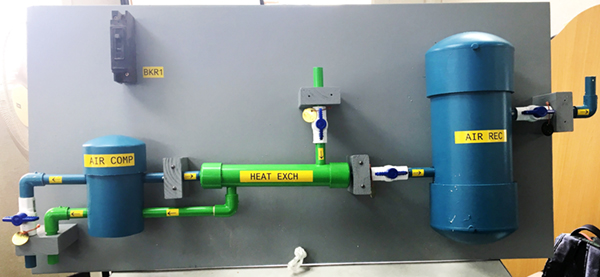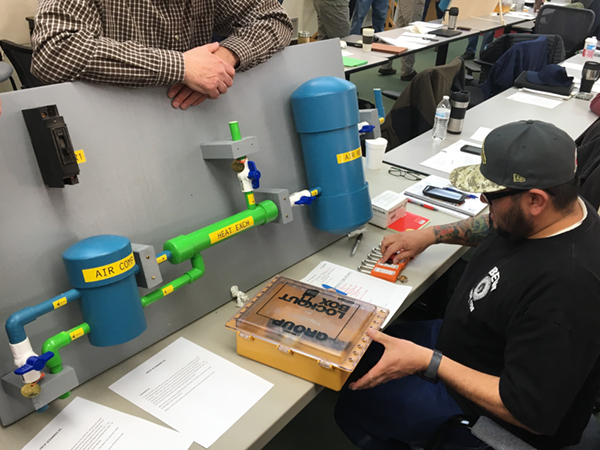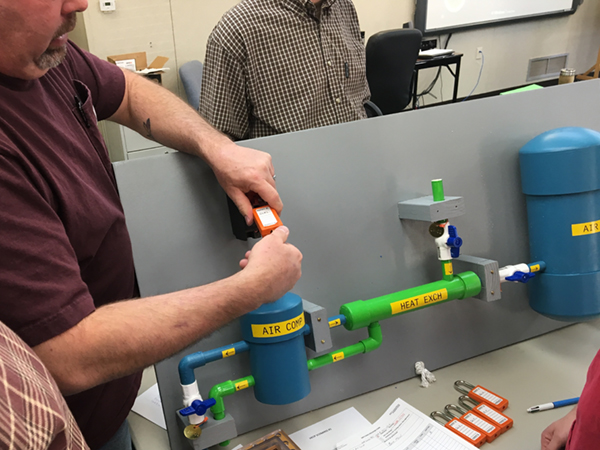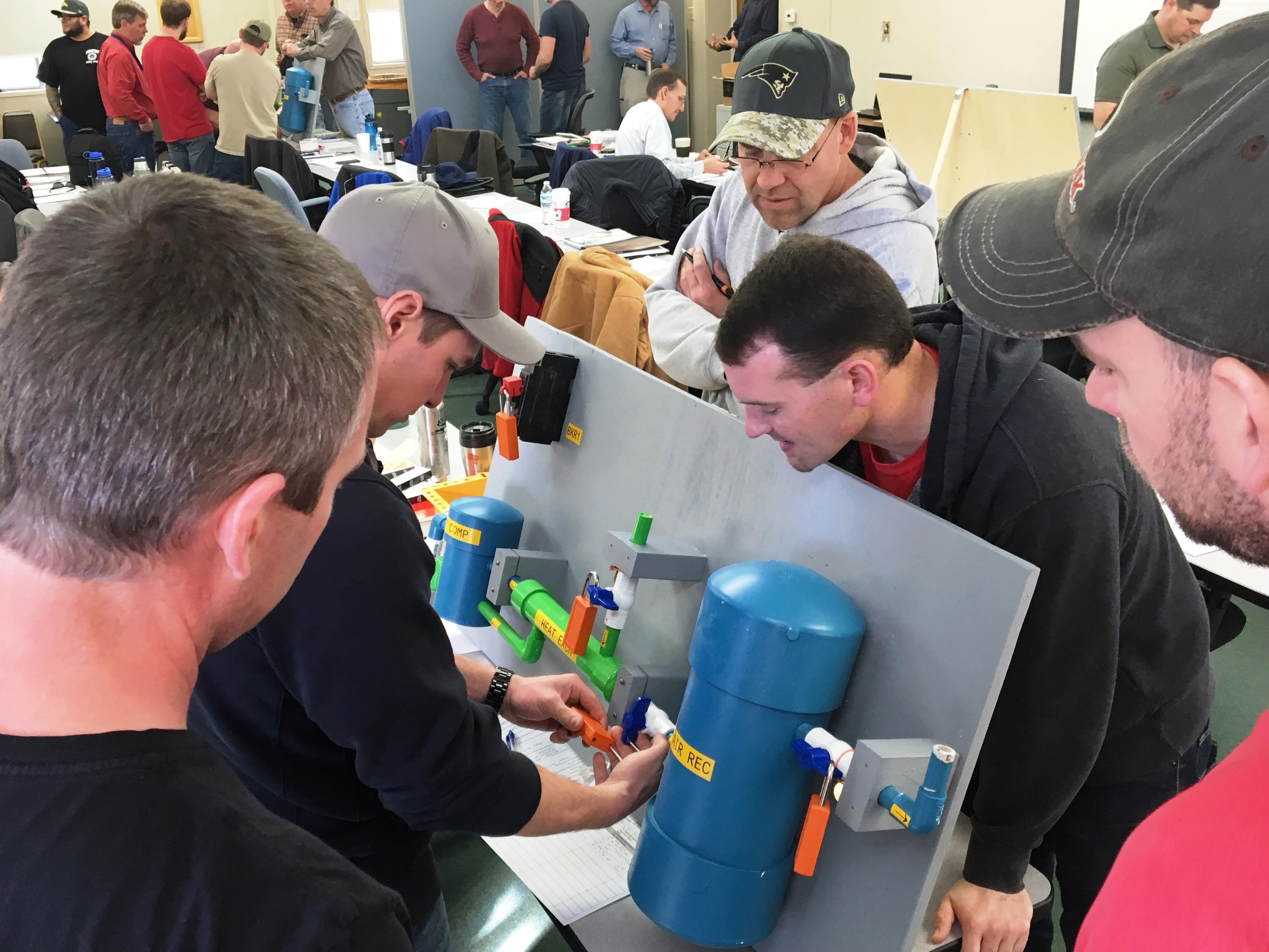- Reclamation
- News & Multimedia
- News Stories
- ECAO Steps Up HECP Training
ECAO Steps Up HECP Training
Written by: David Hartman, ECAO

One of the four plant air compressor assembly models made for the hands-on lock-out-tag-out training (HECP).
Eastern Colorado Area Office (ECAO) hosts a week of Block Safety Training twice a year, dealing with topics such as Confined Space, Hazardous Communications, Hearing Conservation, Fall Protection, Hazardous Energy Control, etc.
ECAO hosted the initial block training of the year in the first week of February in 2016, and as usual, one of the topics covered was the Hazardous Energy Control Program (HECP), or as many of you might call it, “Lock-Out-Tag-Out.” What was different about this HECP training was the use of hands-on models.
In-house HECP instructors Ralph Beall (Colorado Big Thompson Facility Manager), Scott Wik (Frying-Pan Arkansas Facility Manager), and William (Jeff) Cross (PS2 at Flatiron Power Plant) have been working to improve the HECP training experience for the past several years.
In order to improve the training experience, they used the original informational PowerPoint provided by the Power O&M Office and arranged it to more closely follow the Facilities Instructions, Standards and Techniques (FIST) 1.1 Manual. They also created table top exercises providing the staff a chance to practice and better understand the manual. This year Beall and Cross, with the help of staff from Flatiron Power Plant, stepped it up even further by creating hands-on models that students could work with.
The students were divided into four groups and each group had to pick people to play the roles of Operations Supervisor, Job Supervisor, Switchman, Workman, and even Operator from the Casper Control Center. They were given the assignment of correctly putting a clearance (the formal process of locking out a hazardous energy device) on a plant air compressor assembly represented by the model. They created a Job Hazard Analysis (JHA) for the activity, identified all the steps needed in the clearance procedure, filled out the clearance request and switching program forms, positioned the valves in the proper configurations, and placed locks just as they would in a real work environment.
The whole hands-on approach to teaching HECP was well received and the instructors already have plans to improve on changes they have incorporated so far. In the future, they hope to have additional models, table-top exercises, and interactive devices for each student to allow for instantaneous polling of the class to ensure they understand the material before moving on.

Ronnie Rogers, Flatiron Plant Mechanic, prepares a switching program form and gets ready to apply locks.

Trent Bennett, Mechanic Foreman 1, applies a lock to the compressor power switch on the model.

Employees from the Flatiron & Estes Power Plants, Jonathan Haywood, Trent Cherry, Steve Jagielo, and Allan Philips watch as Adam Northrup applies a lock to the model.
Published on May 23, 2017

